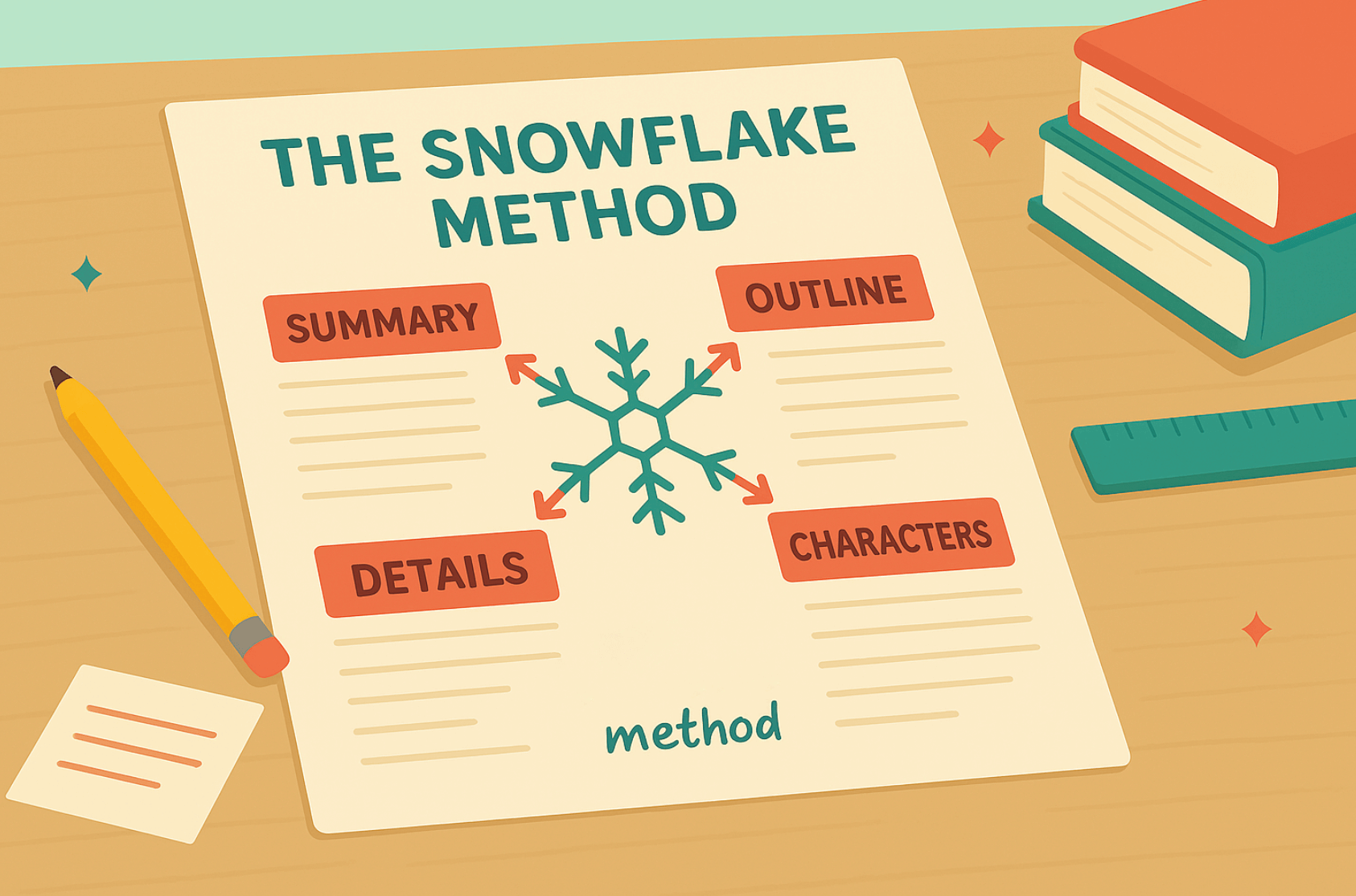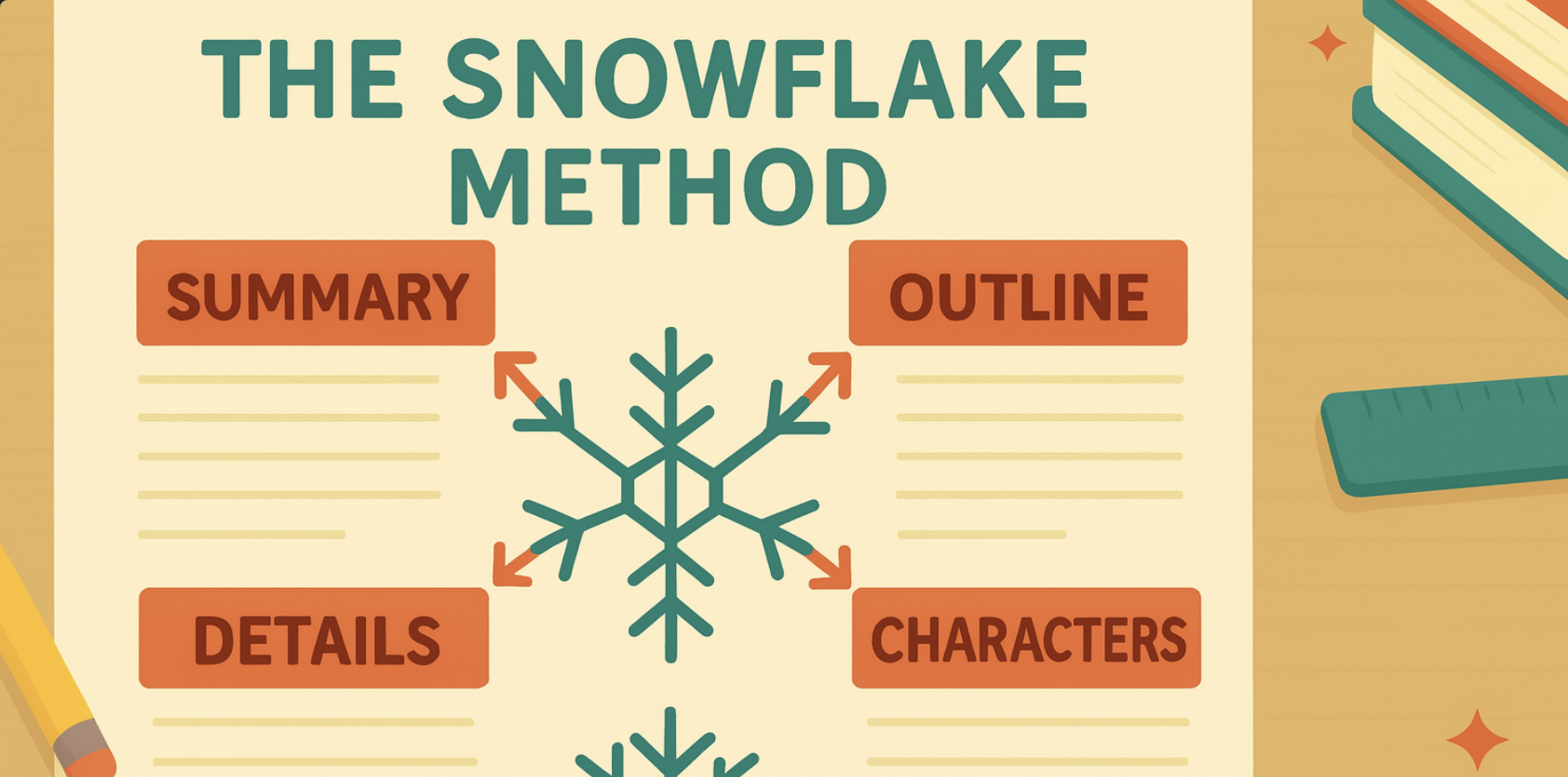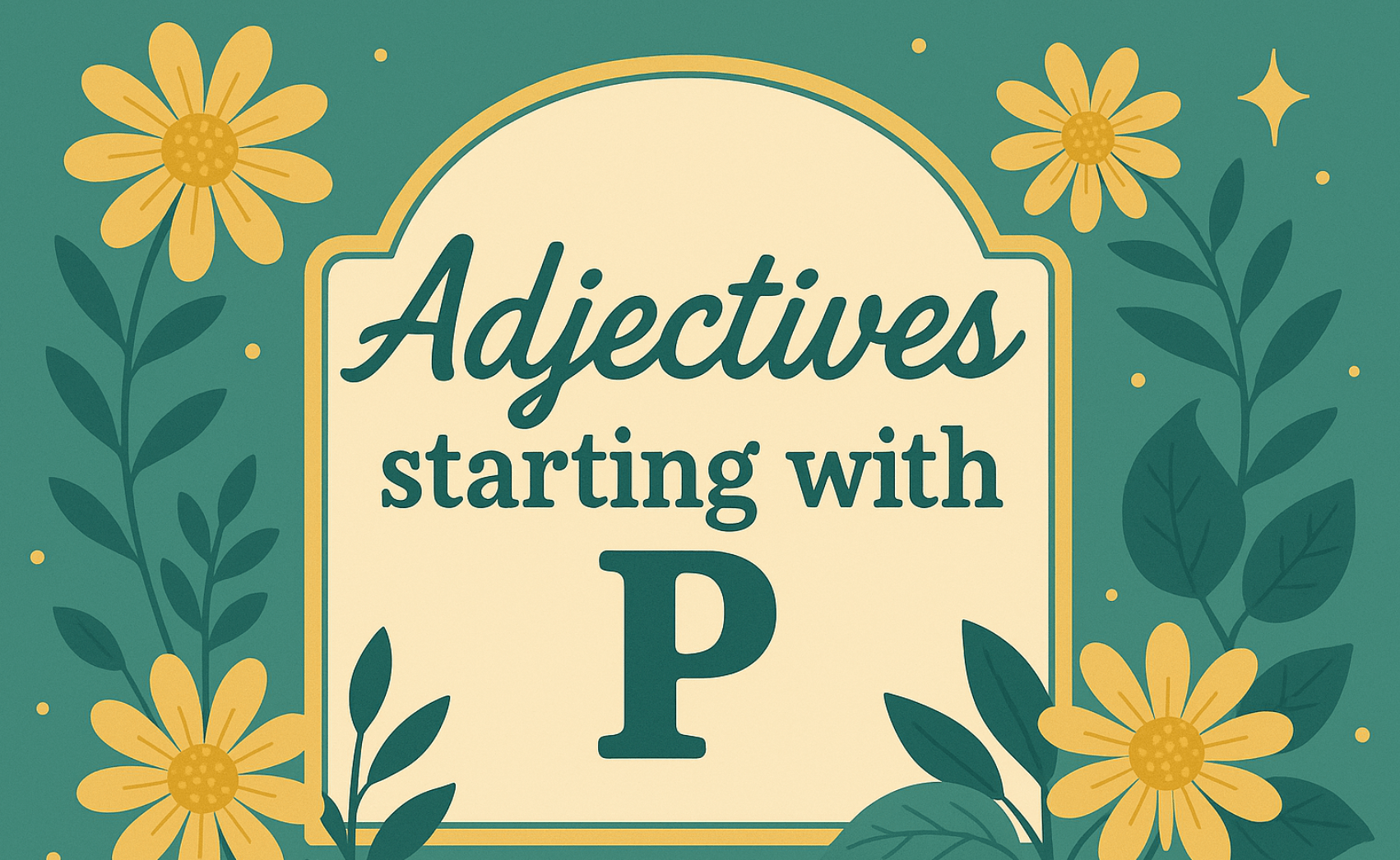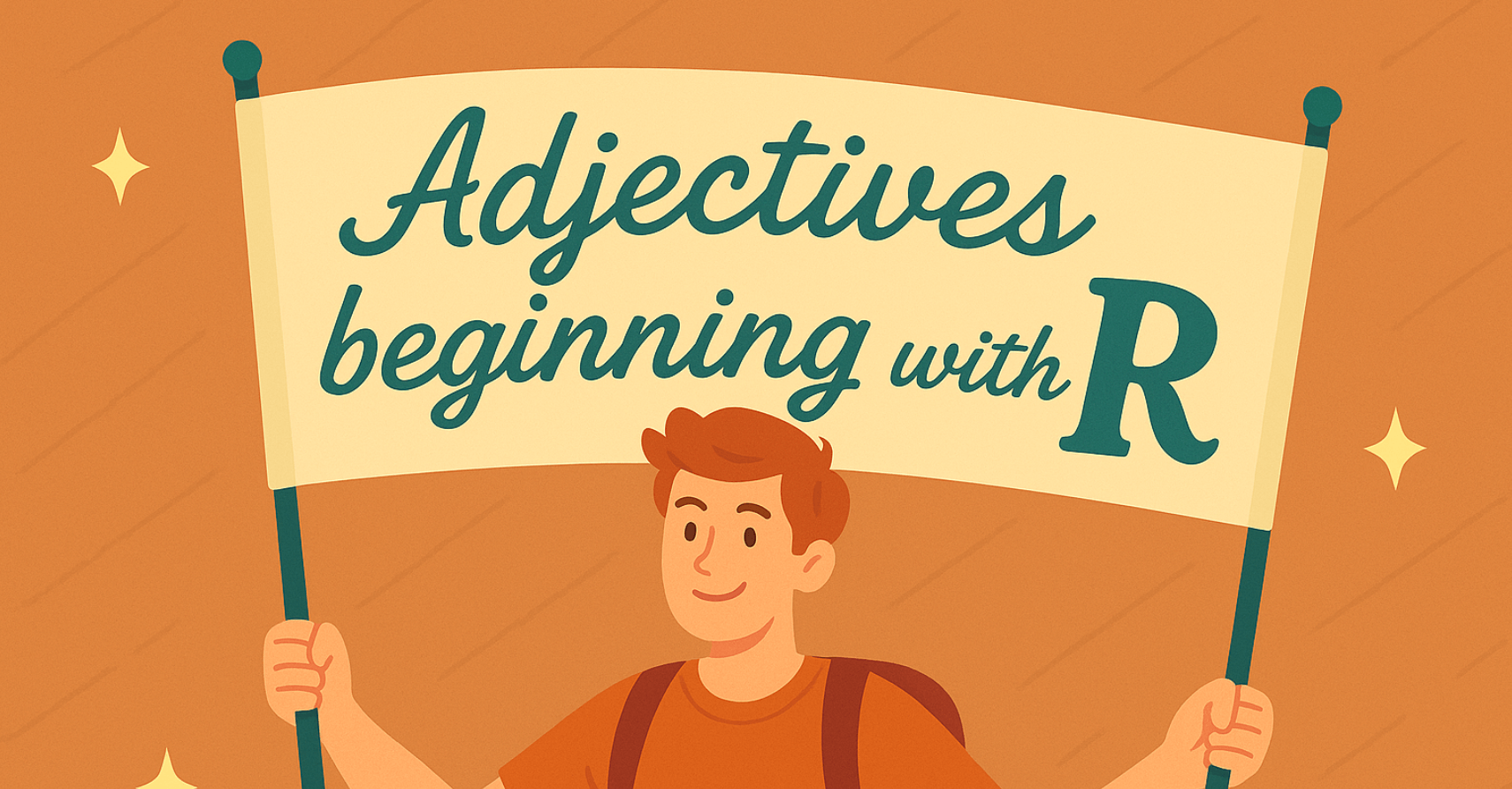Staring at a blank page can feel a lot like standing in front of a blizzard: endless, overwhelming, and a little chilly for your confidence. That’s where the Snowflake Method comes in. A structured, step-by-step approach to novel writing that turns the chaos of an idea into a fully fleshed-out draft.
Created by author and physicist Randy Ingermanson, the Snowflake Method is based on the principle of gradual expansion. You start small, a single sentence, and then build outward in layers, just like the branching pattern of a snowflake. By the end of the process, you don’t just have a story idea; you have characters, subplots, and a scene-by-scene roadmap ready to draft.
In this guide, we’ll break down exactly what the Snowflake Method is, how it works, and how you can use it to write your own novel. Whether you’re a meticulous planner or someone who usually wings it, this method offers enough structure to keep you focused while leaving room for creativity (and maybe a little procrastination, because writers are still human).
What Is the Snowflake Method?
The Snowflake Method is a novel-writing approach that helps you grow your story idea from a single, simple sentence into a complete draft. Think of it as literary origami: you start with one fold (your core idea), then keep expanding, refining, and layering until you have something intricate, detailed, and ready to show off.
The method was developed by author Randy Ingermanson, who happens to also be a physicist; which explains why it feels so structured. The guiding principle is simple: instead of diving headfirst into a 300-page draft, you expand your story step by step. First a sentence, then a paragraph, then pages, until the novel takes shape naturally.
In practice, the Snowflake Method walks you through 10 stages, each one adding more depth. You’ll create a one-sentence summary, then stretch it into a paragraph, then map out characters, then build a scene list, and eventually, you guessed it, write the full manuscript.
Basically, the Snowflake Method is a planning framework that keeps you organized without boxing in your creativity. It’s especially popular with writers who like structure (the “plotters”), but it’s flexible enough that even “pantsers”- those who usually write by the seat of their pants – can adapt it to fit their process.
Why Use the Snowflake Method? (Pros & Cons)
The Snowflake Method has earned a loyal following because it takes the “where do I even start?” panic out of writing a novel. But like any approach, it has its strengths and its quirks. Here’s what you should know before diving in:
The Pros
- Clarity from the start: By beginning with a single-sentence summary, you sharpen your story’s focus early. No more wandering through 50,000 words before realizing you forgot a plot.
- Scalable structure: The step-by-step expansion makes it easier to plan not just one book but an entire series.
- Early problem-spotting: Weak character arcs or saggy middles become obvious in the outline stages, long before you’ve written chapters that need painful rewrites.
- Confidence boost: Writers often find that having a roadmap makes the drafting stage less intimidating. (Translation: fewer dramatic sighs at the keyboard.)
The Cons
- Upfront time investment: Building summaries, character sheets, and scene lists can feel like homework before the “real” writing begins.
- Risk of rigidity: Some writers feel boxed in if they follow all 10 steps too literally. Stories can evolve, and the method works best when you allow for flexibility.
- Not for everyone: Pure discovery writers, those who thrive on spontaneity, may find it too structured, unless they adapt it to just a few key steps.
The Verdict
If you love having a plan, the Snowflake Method is like GPS for your novel. If you hate plans, you can still borrow parts of it to give your draft a backbone without committing to the full ten steps.

The 10 Steps of the Snowflake Method
The Snowflake Method unfolds in ten stages, each one adding a new layer of depth to your story. By the time you finish, you will have expanded a single idea into a complete roadmap for your novel. To see how it works in practice, let’s imagine we are building a fantasy novel about a young blacksmith who discovers they are destined to save their kingdom.
Step 1: Write a One-Sentence Summary
Capture the heart of your story in about fifteen words. This is your logline, the elevator pitch that defines your protagonist, their goal, the conflict, and the stakes.
Example: A humble blacksmith discovers a magical secret that could save the kingdom from an ancient curse.
Step 2: Expand Into a One-Paragraph Summary
Turn your single sentence into a five-sentence paragraph. Begin with the setup, follow with three escalating conflicts, and end with the resolution. This creates a skeleton of your plot.
Example: When a young blacksmith uncovers a hidden relic, they learn the kingdom faces destruction by an ancient curse. As the blacksmith struggles with self-doubt, enemies seek to steal the relic. With allies by their side, they must choose between safety and sacrifice. The blacksmith finally confronts the curse head-on and embraces their destiny. The kingdom is saved, and the blacksmith discovers their true worth.
Step 3: Create Character Summaries
Outline each major character. Include their name, role in the story, motivation, goal, conflict, and what they will learn or change by the end. This step ensures that character arcs align with the plot.
Example:
- Blacksmith Hero: Motivated by a desire to protect their village. Goal is to destroy the curse. Inner conflict is self-doubt. Transformation is embracing courage and leadership.
- Mentor: Wise but secretive. Goal is to guide the hero. Conflict is withholding truth. Transformation is learning to trust the hero.
- Villain: Ambitious sorcerer. Goal is to control the relic. Conflict is obsession. Transformation is downfall caused by their own greed.
Step 4: Expand to a One-Page Synopsis
Take your one-paragraph summary and stretch it into about one page. This allows you to highlight turning points, introduce subplots, and add more detail to your story’s structure.
Example: At this stage, you might write a full-page document describing how the hero finds the relic, fails during early battles, trains under the mentor, and finally defeats the sorcerer in a climactic showdown.
Step 5: Write Character Sheets
Develop one-page descriptions for each important character. Cover backstory, inner wounds, relationships, flaws, strengths, and how they evolve throughout the story. This step adds depth and emotional resonance.
Example: For the Blacksmith Hero, you could describe childhood experiences in the forge, a fear of failure from past mistakes, and a nervous habit of polishing tools when anxious.
Step 6: Expand the Synopsis to Four Pages
Now that your story has structure, expand the one-page synopsis into four pages. This helps you refine pacing, weave in subplots, and prepare for the scene-by-scene breakdown.
Example: Here you would note the inciting incident (finding the relic), midpoint reversal (villain captures the mentor), and climax (final battle at the ruins).
Step 7: Map Character Storylines
Track each character’s journey individually. Identify the key scenes where they appear and define how their arc contributes to the overall narrative. This ensures consistency and balance across the cast.
Example: The mentor appears in scenes 4 through 15, disappears when captured in scene 16, and returns for the climax in scene 28.
Step 8: Build a Scene List
Create a spreadsheet or list of scenes. Include the point of view, purpose of the scene, conflict, outcome, location, and an estimate of length. This step prevents sagging plots and keeps momentum.
Example:
- Scene 1: POV hero. Purpose is to show ordinary world. Conflict is a broken sword for a customer. Outcome is foreshadowing of blacksmith skill.
- Scene 5: POV villain. Purpose is to reveal antagonist’s plan. Conflict is deciding whether to chase rumors of the relic. Outcome is raising stakes.
Step 9: Write Scene Summaries
Write one or two paragraphs for every scene on your list. Focus on what happens, the conflict, and how the scene moves the story forward. These summaries serve as a guide when drafting.
Example: Scene 12 might describe the hero sneaking into the ruins with a friend, encountering traps, and narrowly escaping, while deepening their bond through banter and conflict.
Step 10: Write the First Draft
Finally, draft the novel using all the groundwork you have laid. At this point, the blacksmith’s world, allies, villains, and major plot turns are fully developed. At this stage you can focus on storytelling, confident that the foundation is strong. The Snowflake Method gives you a clear path so you can write without feeling lost.
Mini Walkthrough (2-Minute Example)
Sometimes the Snowflake Method can sound intimidating when laid out in ten full steps, so let’s look at a bite-sized example. Imagine we are writing a lighthearted romantic comedy about two rival coffee shop owners. We will quickly move through the first three steps to see how the method builds momentum.
Step 1: One-Sentence Summary
Two rival coffee shop owners compete for customers until they unexpectedly fall in love.
Step 2: One-Paragraph Summary
When a trendy new café opens across the street, a stubborn barista declares war on the flashy owner. Their competition escalates with marketing stunts, late-night sabotage, and dueling lattes. As the rivalry heats up, so does their undeniable chemistry. When the barista’s shop faces closure, the pair must decide if they are enemies, partners, or something more. In the end, love wins out, and they brew a future together.
Step 3: Character Summaries
- Barista Hero: Independent and fiercely loyal to tradition. Wants to save their family’s café. Struggles with pride and fear of change.
- Trendy Owner: Ambitious, confident, and tech-savvy. Wants to grow their franchise. Struggles with loneliness behind their success.
- Supporting Friend: Works at the barista’s café. Provides comic relief, offers sage advice, and secretly ships the couple from day one.
This mini-example shows how quickly you can turn a spark of an idea into something tangible. In less than ten minutes, you now have a working premise, a short plot outline, and the beginnings of character arcs. From here, you would keep expanding until you have a complete novel framework.
Templates & Tools (Make It Plug-and-Play)
The Snowflake Method becomes much easier when you have templates and tools ready to go. Instead of staring at a blank page wondering where to begin, you can plug your ideas into simple frameworks that guide your creativity.
Logline Formula
A quick way to craft your one-sentence summary:
[Protagonist] + [goal] + [conflict] + [stakes]
Example: A young blacksmith must master an ancient relic to stop a sorcerer from destroying the kingdom.
One-Paragraph Summary Template
Follow these steps:
- Introduce your protagonist and the setting.
- Present the inciting incident.
- Show three escalating conflicts or obstacles.
- Conclude with the climax or resolution.
Character Sheet Outline
Character sheet outlines are a wonderfully easy way to get to know your characters.
- Name and role in the story
- Motivation (what drives them)
- Goal (what they want)
- Conflict (what gets in their way)
- Epiphany (how they change)
- Key quirks, habits, or backstory notes
Scene List Spreadsheet
Columns you can use:
- Scene number
- Point of view
- Location
- Purpose of the scene
- Conflict or tension
- Outcome or change
- Estimated word count
Helpful Tools
- Google Docs and Sheets: Free, simple, and easy to share.
- Scrivener: Popular writing software with built-in organization features.
- Notion or Obsidian: Great for keeping research, notes, and scene outlines in one place.
- Index cards or sticky notes: Perfect if you like a physical, visual approach.
With these templates, you do not need to reinvent the wheel every time. Instead, you can jump right into shaping your idea, confident that you are building on a clear framework.
Your Publishing Journey Awaits – Start NowAdapting the Snowflake Method
The beauty of the Snowflake Method is that it is not a rigid checklist carved in stone. It is a framework you can bend, trim, or stretch depending on your project and your writing style. Here are a few common ways writers adapt it.
For Discovery Writers (a.k.a. “Pantsers”)
If planning every detail makes you break out in hives, you can still borrow the early steps. Writing a one-sentence summary and a one-paragraph outline can anchor your story without boxing you in. Many discovery writers revisit later steps, like building a scene list, after they have a messy first draft.
For Short Stories and Novellas
Not every story needs ten steps of prep work. Shorter works benefit from compressing the process. You might combine Step 2 (paragraph summary) and Step 4 (one-page synopsis) into a single outline, and merge Step 5 (character sheets) with Step 7 (character storylines). This keeps things streamlined while still giving your story structure.
For Series Writers
Planning a multi-book series can get complicated fast, and this is where the Snowflake Method shines. Use the steps for each book individually, but also create a “master snowflake” that outlines the overarching story arc. Think of it as one giant snowflake branching into smaller snowflakes, a blizzard of organization, but in a good way.
For Busy Writers
If you are short on time, cherry-pick the steps that give you the most clarity. Many writers find that doing Steps 1 through 5 creates a solid enough foundation to jump into drafting, while others prefer to push through to Step 8 for a complete scene list before they write a single word.
The key is flexibility. The Snowflake Method should serve you, not the other way around. Adapt it until it fits your process like a glove, or perhaps, like a perfectly symmetrical snowflake.
Snowflake vs. Other Plotting Methods
The Snowflake Method is only one of many ways to plan a novel. To understand its unique value, it helps to compare it with other popular approaches.
Snowflake vs. Three-Act Structure
The Three-Act Structure is a classic model: setup, confrontation, and resolution. It gives you a big-picture map but leaves out the fine details. The Snowflake Method, by contrast, zooms in step by step, creating deliverables like summaries, character sheets, and scene lists. In short, the Three-Act model is a bird’s-eye view, while the Snowflake Method is a detailed blueprint.
Snowflake vs. Save the Cat! Writes a Novel
Save the Cat! is all about beats: fifteen story moments that should appear in a novel or screenplay. It is highly prescriptive, almost like a checklist. The Snowflake Method is less about hitting specific beats and more about growing your story organically. Many writers actually combine the two, using Snowflake to expand ideas and Save the Cat! to fine-tune pacing.
Snowflake vs. The Hero’s Journey
The Hero’s Journey focuses on mythic storytelling and character transformation: call to adventure, trials, return, and rebirth. It is powerful for stories with archetypal heroes. The Snowflake Method is more flexible, since it does not require mythic beats but instead builds structure from any idea, whether it is a romance, thriller, or slice-of-life novel.
Which Should You Choose?
There is no single best method. If you need detailed prep work, Snowflake is ideal. If you want a looser guide, Three-Act or Hero’s Journey may be enough. If you love checklists and pacing markers, Save the Cat! could be your match. Many authors mix and match, creating a hybrid process that balances structure with creativity.
The Snowflake Method FAQ
Q: What is the Snowflake Method for writing?
The Snowflake Method is a structured way to develop a novel by expanding your idea in stages. You begin with a one-sentence summary, grow it into a paragraph, then build character profiles, scene lists, and finally a full draft. It is called the “Snowflake” because, like a snowflake’s branching pattern, the story grows outward in layers.
Q: Who created the Snowflake Method?
The method was developed by Randy Ingermanson, a physicist and award-winning author. He designed it as a practical framework to help writers balance creativity with organization.
Q: Is the Snowflake Method good for beginners?
Yes. Beginners often feel overwhelmed when writing a novel, and the Snowflake Method breaks the process into manageable steps. Instead of writing hundreds of pages without direction, you always know what to do next.
Q: Do I have to follow all ten steps?
Not at all. The method is flexible. Some writers only use the first few steps to clarify their ideas, while others go all the way through Step 10. Think of it as a toolkit rather than a strict recipe.
Q: How long does the Snowflake Method take?
It depends on your pace and the complexity of your story. Some writers complete the planning stages in a few weeks, while others take months. The key is that investing time upfront saves hours of revision later.
Q: Can discovery writers (pantsers) use the Snowflake Method?
Absolutely. Even if you usually prefer to “wing it,” the Snowflake Method can help you create a strong foundation before drafting. Many discovery writers adapt it by using the early steps for direction, then skipping straight to drafting.
Q: How does the Snowflake Method compare to other plotting systems?
Unlike frameworks like the Three-Act Structure or Hero’s Journey, which focus on big-picture story beats, the Snowflake Method gives you tangible documents and deliverables. It is especially helpful if you like detailed planning.
Q: What genres work best with the Snowflake Method?
Any genre can benefit, from romance to science fiction to mystery. The method is genre-agnostic because it focuses on building structure step by step, rather than prescribing specific tropes or archetypes.







